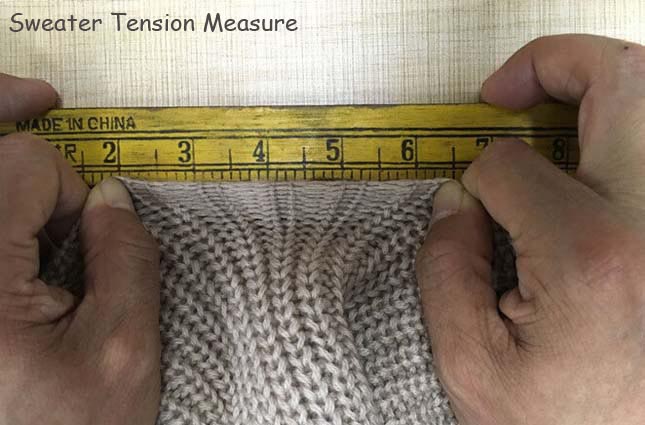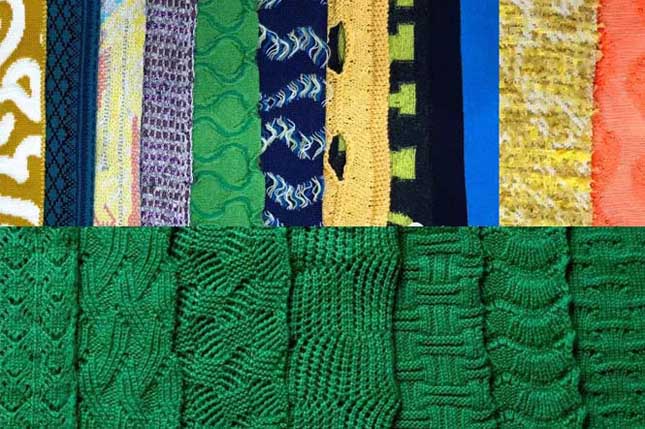
a. The measuring tension way is to strain the fabric (extend it as far as it can be) to a certain needle (i.e. horizontal pull, vertical to the fabric) or to a certain course (i.e. straight pull, along the direction of the fabric), to see the length it can reach.
b. Taking jersey stitch as an example: horizontal pull 10 needles of 12gg jersey knit down is 1 inch 4 points (i.e. 1-4/8 inch), we call this knit down tension 1 inch 4 points.
c. The methods of pulling RIB are different. In general, we pull a few ribs (a rib comprises face and back). For example of 2×2 rib, pulling tension of 10 needles will possibly have two results due to different ways of pulling by different people. One is to pull 10 needles of face and back each. The other method is to pull 10 needles of face and 9 needles of back. Therefore, special attention is needed to avoid mistakes.
Tension has a great impact on sweater's hand feeling, stabilization, shrinkage, weight and cost
a. Hand feeling: If the tension is tight, then it feels hard and a little thick; the Chinese local cashmere sweater market prefers those with tight tension; 12gg jersey sweater tension is usually made to 1 inch 4 points. However European and North American clients prefer fluffier and lighter ones, that is made to 1 inch 6 points or so.
b. Stabilization: Normal yarn counts do common tension, the empirical way can make sweater shaped well. For example, 2/30NM cashwool yarn to make 12gg sweater, the commonly tension is 1 inch 4 points, the sweater will be neat and clean, will not twist.
c. Shrinkage: the tighter the tension is, the less shrinkage the sweater will be.
d. Weight and cost: Under the normal circumstances, the tighter the tension is, the heavier the sweater will be. However the special circumstances are different. As you know the cost is up to the Weight. The more heavier, the more expensive.
How to determine tension in writing sweater production artwork
a. Designer’s idea: style designs should be fully considered, some styles require very loose effect, then need to choose the loose tension to make.
b. Gauge: different gauge has its matching tension.
c. Styles: sometimes clients request to do the effect of fluffy, and then need to make a loose tension.
d. Yarn: different yarns have different quality, different counts and use different ends, which causing tension is changing correspondingly.
e. Operability: it's required knit several swatches on knitting machine to choose the best tension. It must be good for bulk sweater production, too loose or too tight tension is not conducive to the mass sweater production, that should be paid special attention to.
In a word, even common yarns and sweater styles ,we must understand thoroughly the designer’s idea and knit several swatches to determine tension before we develop a new sweater sample.
More sweaters information, PLS visit www.midifashion.com




 Knitwear Manufacturer China Sweater Factory
Copyright © 2008-2019 Zhejiang Midi Fashion Co., Ltd. All Rights Reserved.
Knitwear Manufacturer China Sweater Factory
Copyright © 2008-2019 Zhejiang Midi Fashion Co., Ltd. All Rights Reserved.


 Knitting Pullover Manufacturer
Knitting Pullover Manufacturer

 Chinese
Chinese German
German Spanish
Spanish French
French Italian
Italian Portuguese
Portuguese Korean
Korean Arabic
Arabic Russian
Russian